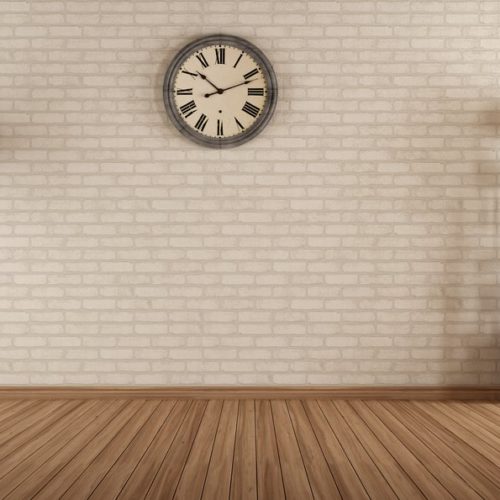The search for the right plot of land is often difficult and involves a time investment that should not be underestimated. When making a decision, however, you should not only consider criteria such as location, price and nice neighbors, but also deal with the quality and characteristics of the floor. In order to check the soil quality, a professional soil report should be drawn up in any case.
the essentials in brief
- Before buying a property, gather as much information as possible about its previous use, its load-bearing capacity and possible loads.
- The preparation of a professional soil report is always worthwhile in order to calculate costs and to be able to guarantee the smoothest possible construction process.
- Many reductions in quality or pollution of the soil can be compensated for or improved with the help of technical measures.
Quality assessment at first glance
founding
The constructive and static transition from the structure to the ground is formed by an appropriate foundation. This usually takes the form of a foundation, which consists of structural elements from civil engineering (e.g. piles, beams, slabs). The depth and height of the foundation should be selected so that the movement of the ground on the surface does not have any negative effects on the structure. In our latitudes, the frost depth is decisive for the necessary depth of a foundation.
As a layman, it is impossible to assess at first glance whether the building site is of high quality. One cannot say that this is a high-quality building site without really looking in depth. For this it is necessary above all to examine the underground in its three-dimensionality. A look at the aerial photo can provide the first indications of possible disadvantages of the property under consideration: If all other properties in the area are already developed, the suspicion of technical problems with the subsoil is not entirely unfounded. Conversely, existing or previous development on the property is a good indication that the building site is unproblematic. However, even in this case one does not know for sure how the existing structure was founded. A conversation with the previous property owner or a visit to the building authority can help to clarify this question.
Not an exclusion criterion, but should be treated with caution
Although many problems can be solved with technical measures, there are a few important criteria that you should definitely consider before buying a property, for example:
Location of the property
It is essential to clarify whether the property has been affected by flooding in the past or whether this is to be expected in the future due to climate change.
load-bearing capacity of the subsoil
Bogs or peat inclusions in the soil as well as moisture-rich soil layers influence the load-bearing capacity of the subsoil.
Previous use of the property
In areas formerly used for mining, there may still be underground cavities that increase the risk of the subsoil collapsing.
Possible legacy issues
If the property was previously used for industrial purposes, it is possible that there are still residues of pollutants in the soil. Backfills can also contain pollutants.
But where can you find this information? It is best to contact the responsible environmental and nature conservation authorities, such as water management or mining authorities. These have registers in which a great deal of information is entered, such as suspected contaminated sites on formerly industrially used property. Many of these documents can now also be viewed online. In this article we have summarized the most important building law terms for you.
Soil reports are worth it!
preparation for construction
In order to make a property ready for construction, all appropriate precautions must be taken so that it can be built on safely. This includes, among other things, the disposal of contaminated sites, the creation of an appropriate load-bearing capacity of the subsoil or the raising and leveling of the soil
Since the investments associated with the purchase of land and the construction of a house are considerable in most cases, one should definitely secure oneself in advance with regard to the building and habitability of the land. Even if there is good building ground in the surrounding area, it can never be ruled out that the conditions have not changed at certain points. On the one hand, this is important in order to be able to live healthily and carefree in your own house in the long term, and on the other hand, to be able to correctly estimate any costs of preparing for construction in advance. Above all, the excavation of the construction pit and the professional disposal of the material are usually associated with not inconsiderable financial expenses. In addition, the submission of a soil report to the authorities for the approval of a construction project is normally mandatory.
In order to be able to make clear statements about the soil quality, the borehole must be at least 6 meters below the foundation height. In advance, you should check the official documents to see how high the groundwater level is in order to select the appropriate drilling method. Two commonly used methods for loose rock and average groundwater levels are:
percussion probing
This method is used to determine the existing soil material and to explore contaminated sites in the soil. For this purpose, a slit-shaped open tube is driven into the ground and a soil sample is taken. In this way it can be determined which soil is involved.
dynamic probing
This test measures the penetration resistance and thus the load-bearing capacity of the soil. A pole with a clip-shaped tip is driven into the ground and the number of hits required to penetrate 10 cm into the ground is counted.
In addition, further investigations are possible, for example to determine the water content in moist soil. Based on the results, the expert can assess whether the building ground is problem-free or whether technical measures are necessary to improve the soil quality.
Of course, the costs for such an appraisal depend on the size of the property, but also on how high the groundwater level is and how deep the building project goes underground (e.g. with or without a basement). But where do you get such a report from? The best thing to do is contact a local engineering office that is familiar with the special features of the soil in the region. You should calculate a flat rate of 2,000-3,000 euros for a conventional single-family house.
Contamination of a property
ground valueThe standard land value defines the price of a square meter of undeveloped land. It is determined at least every other year and depends on a large number of factors. Since this is an average value, the actual market value of an individual property must be determined based on its special features.
If the property is found to be contaminated with pollutants, this does not necessarily mean that the purchase should be discouraged. The costs that you spend on an appraisal are only a fraction of what a builder will have to face later in the construction phase. In addition to the type of harmful substances, the decisive factor is also how deep and in what form they are present. If the groundwater is contaminated with pollutants, it is particularly important to clarify whether the pollutants are coming from the property or from outside. In the Berlin area in particular, rubble is often found, which is usually very expensive to dispose of, but is not necessarily dangerous. It is best to clarify in advance which measures are necessary in detail with the local environmental authority. This usually keeps a register of contaminated sites (also known as a register of soil pollution or suspected pollution), in which already known pollutant loads are entered or newly determined ones are recorded. The entry of a property in this cadastre always causes a deviation of the property price from the current standard land value (see info box). Before buying, you should make appropriate agreements with the seller of the property regarding the disposal of the existing contaminated sites or negotiate a corresponding price reduction. Advice from a lawyer and a certified soil expert is definitely recommended.
Conclusion
The motto is: before buying a piece of land, not only gather as much information as necessary, but as much as possible. Ask the responsible authorities and offices, do some research on the Internet, take a look at aerial photos from different periods and find out how the property was used in the past. Investing in expert advice from a soil surveyor and carrying out a few standard tests is definitely worth it. This is the only way to calculate future costs and guarantee a quick construction process without any nasty surprises.



